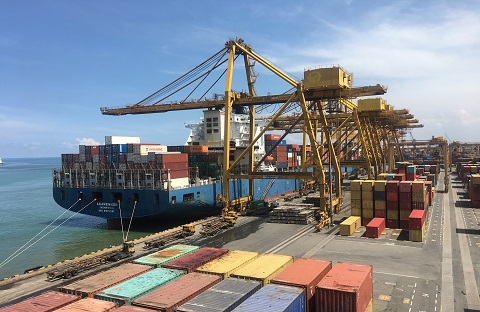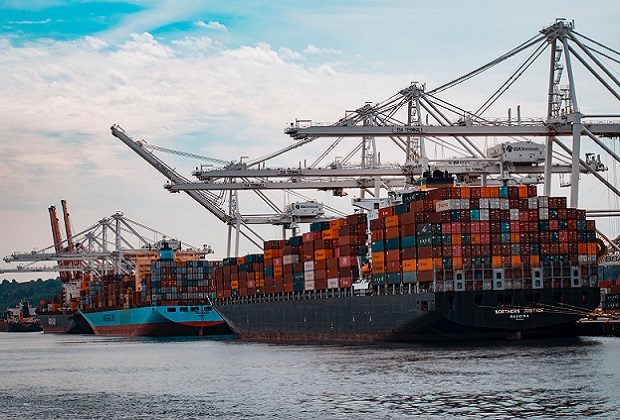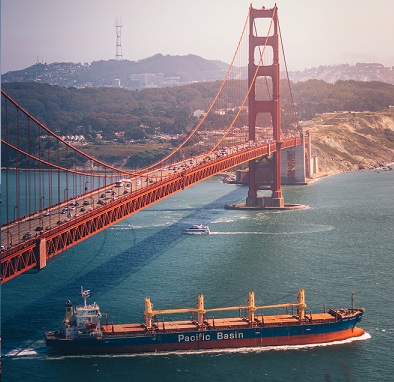
Generally a port can be rendered unsafe due to:
- Sandbanks and shallows
- Obstructions such as wrecks
- An inadequate system at the port (such as weather warnings, mooring facilities and tug availability) to enable a ship to leave the port when weather conditions make it unsafe for the vessel to remain at berth
- Political situation or war
- Losses due to inordinate delay caused by temporary and permanent obstructions
- Outbreak of an epidemic
1. Where does the obligation to nominate a safe port/berth come from?

a. Is there an implied term as to the safety of the port/berth?
If the charter does not have a safe port/berth warranty then owners will not be able to make a safe port claim.
b. Safe berth warranty but no safe port warranty
While a safe port obligation will imply a safe berth warranty, the contrary is not the case. In the absence of a safe port obligation, the safe berth warranty will only apply to movements within the port and will not extend
to the approach to the port.
2. Safe ports and berths:
Definition
A port or berth will not be safe unless, “in the relevant period of time, the particular ship can reach it, use it and return from it without, in the absence of some abnormal occurrence, being exposed to danger which cannot be avoided by good navigation and seamanship”
a. Reaching the port or berth
A port or berth will be unsafe if the ship is unable to reach the port safely.
For example a port may be considered unsafe even if the ship suffers damage during its passage on a river or channel when approaching a port. The approach can extend to more than 100 miles (say the Mississippi for example) and does not have to be in the immediate vicinity of the port.
A port for example will be unsafe if the ship is required to lighten cargo or has an air-draft which exceeds the available clearance under a bridge that has to be passed whilst proceeding to the port. The risk of hostile seizure or attack during the vessel’s approach to the nominated port may render the port unsafe, however such risk of attack must be sufficiently real.
b. Safety of the port
The port must be safe for the particular ship and for the duration of her stay. A ship may enter a port which is safe and which subsequently becomes unsafe due to adverse weather for example. A port will still be safe if the ship can safely leave the port because it has become dangerous.

What makes a port unsafe is essentially a question of fact: weather, inadequate berthing and mooring facilities, obstructions and defective navigational aids may render the port unsafe. However, the criteria which have to be applied in determining whether a port is safe are questions of law. Dangers, whether physical or not, which are avoidable by ordinary good navigation and seamanship will not render a port unsafe.
- The effect of weather on the safety of the port will be a factor which will be taken into account when establishing the safety of the port. Typically one will look at whether there are local weather warnings advising the master of adverse weather as well as whether the ship can safely leave the port because of the onset of bad weather.
- A port can become unsafe if the berthing and mooring facilities are inadequate (fenders damaged or missing/damaged mooring bollards)
- The fact that the port is safe to enter is not enough if it may become unsafe for the vessel to remain there.
c. Leaving the port

The port must be safe for the particular vessel in its condition to depart. A port will be unsafe if the ship is endangered when departing from the port. For example if on departure ice has formed and the ship’s hull is damaged as a result when leaving, the port will be unsafe.
3. Rights and obligations under the charter
Charterers first have an obligation to nominate a safe port. If the port becomes unsafe after the first nomination, charterers then have an obligation to nominate another (safe) port.
a. Charterers’ obligation to nominate a safe port
- Charterers have an absolute obligation to nominate a prospectively safe port.
- The fact that charterers do not reasonably know of the danger is no defence
- The port does not need to be safe at the time of the nomination.
- However it must be safe when the ship is due to reach, stay and leave the port
b. What happens if the port becomes unsafe after the port is nominated?
In such situation:
- In the case of a time charter party, charterers will have to cancel the original order and nominate a safe port
- If the ship is in port, charterers must order the ship to leave (if the danger can still be avoided)
- In the case of a voyage charter party, where the port has already been nominated, the view is that charterers have no general duty or right to re-nominate. If the charter (and the B/L) have a liberty clause (e.g. “so near thereto as she may safely get”), then the owner may discharge the cargo at some other port
c. Owners’ rights
- Owners are however entitled to act on the good faith that charterers have nominated a safe port and proceed to the port without having to make further enquiries
- The master does not have to instantly obey charterers’ orders if he is in doubt of the prospective safety of the port. He will have reasonable time to make enquiries
- Owners are entitled to cease to obey charterers’ orders and refuse to proceed or continue to stay in the port
- If charterers fail to make a valid nomination within the time required, owners are entitled to damages for the delay incurred in awaiting a valid nomination
- If charterers persist in giving the order, owners may be entitled to terminate the charter
Note, however, that if it is found that the port was not unsafe, owners may be held liable for any losses and expenses caused as a result of owners’ refusal to comply with charterers’ orders.
d. What happens if the owners accept charterers’ orders in full knowledge of the unsafety of the port?
- In such a case, owners may have waived their right to refuse to obey charterers’ orders
- The fact that the master agrees to call at an unsafe port does not mean that owners waive their right to damages
- Owners may however be deprived from seeking damages if they unequivocally represent to the charterers that they will not treat the order as a breach of the charter or have not acted reasonably in trying to minimise damage to the ship
4. Charterers’ defences to an unsafe port claim
a. Negligence of the crew
The negligence of the crew will be a valid defence to an unsafe port claim if it is proven that it broke the chain of causation.
Whether the master is negligent is a question of fact. Courts will generally look at the dilemma in which the master found himself as to whether or not to proceed and will generally decide that if the master acted reasonably (even though mistakenly) the cause of the damage stems from following charterers’ orders.
Generally courts will be reluctant to accept arguments from charterers that the master could see that the port was unsafe and that the decision to proceed is the true cause of the damage. Charterers cannot generally rely on their own breach to defend a claim.
b. One named port in the charter.
Is this a defence?
If for example the charter only names one port such as “one safe port, Hamburg”, the owner will not have waived his right to make an unsafe port claim even if they knew or ought to have known that the port was unsafe.
c. Abnormal occurrences
Charterers will only be liable if the damage to the ship is due to the prevailing characteristics of the port. A port will therefore not be inherently
unsafe if the damage is due to an abnormal event such as a tsunami. An
event is not an abnormal occurrence just because it is out of the ordinary.
Whether an event is an abnormal occurrence is a question of fact and it can sometimes be hard to determine which category this event falls into.
The sudden outbreak of a war will not be a characteristic of the port. This event will be an abnormal occurrence and the charterers will not be in breach of their safe port obligations. However, if the war persists then this may become a characteristic of the port in relation to future nominations of that port.

For the purpose of determining whether charterers are in breach of the warranty, the time for judging whether the occurrence was “abnormal” is when charterers give the order. If an event which was abnormal at the time of giving the order (so that charterers’ order is valid) but has become normal by the time of the vessel’s call, the case will be one of supervening unsafety [and charterers will be obliged to give alternative voyage orders – see b) above].
An abnormal occurrence can sometimes be hard to define. A good illustration of this problem can be found in the OCEAN VICTORY [2015]
case: the OCEAN VICTORY, was discharging her cargo at Kashima in Japan when the berth was affected by considerable swell caused by long waves and high winds of up to Force 9 on the Beaufort Scale.
The Master then decided to leave the berth for open water, but due to severe gale force winds in the fairway lost control of the vessel while leaving the port and was driven back onto the breakwater wall. The ship became a total loss.
At first instance, the court found that Kashima port was unsafe because it did not have a safe system to make sure that vessels needing to leave the port due to these weather conditions (which were not deemed to be an “abnormal occurrence”) could do so safely, and that safe navigation out of the port required more than good navigation and seamanship.
On appeal however, the court concluded that the “concurrent occurrence” of (i) the severe swell at berth from long waves that made it dangerous for a vessel to remain at the Raw Materials Quay; and (ii) the severe gale force winds from the northerly/north-easterly direction in the exit fairway conditions which affected Kashima was rare and was therefore an “abnormal occurrence”.
Hence, in this case, there was no breach of the safe port warranty. This case is under appeal to the UK’s Supreme Court, so the test for “abnormal occurrence” may be further redefined.
5. Limitation of Liability
Charterers may be able to limit liability for claims relating to pollution or cargo damage under international conventions. Charterers’ liability to owners for damage to the ship due to charterers’ breach of their safe port obligation is not limited by international conventions, although charterers may be able to limit contractually.